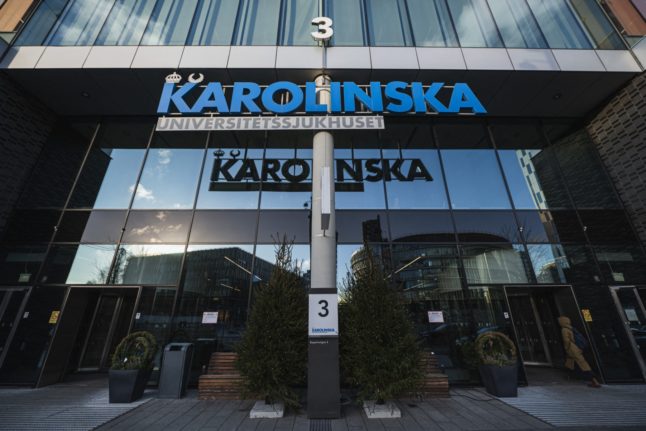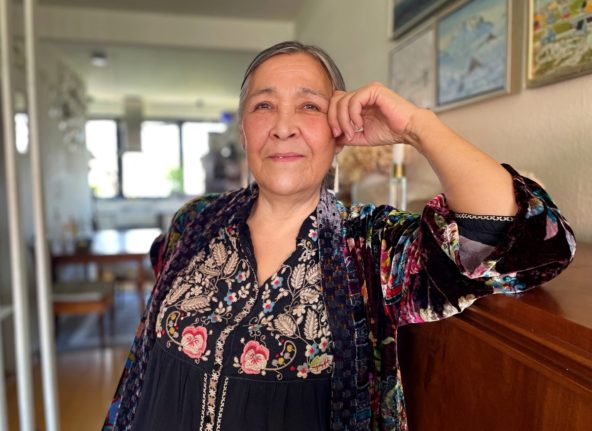The latest World’s Best Hospitals ranking by US-based Newsweek and global data firm Statista has revealed the top hospitals in Sweden, Denmark, and Norway.
Newsweek’s ranking, the only global comparison, draws from four key data sources. Firstly, recommendations from experts within the healthcare sector, including doctors and administrators, were sought. Over 85,000 experts worldwide were invited to participate, yielding responses from a significant portion of them.
Additionally, results obtained from patient surveys assessed aspects like treatment efficacy and communication. Quality metrics were also considered, including factors such as wait times, patient safety, and adherence to stringent hygiene protocols.
Lastly, the utilisation of patient-reported outcome measures measured patients’ perception of treatment efficacy and their post-care quality of life.
Sweden’s Karolinska Universitetssjukhuset was the top-ranked Scandinavian hospital on the list, ending in 7th place out of the top 231.
Denmark’s Rigshospitalet – København in Copenhagen followed closely at 21st place, with Aarhus Universitetshospital in Aarhus, Denmark, and Oslo Universitetssykehus in Norway trailing at 23rd and 29th, respectively.
Other notable mentions on the list hail from Gothenburg and Uppsala in Sweden, as well as Odense and Aalborg in Denmark.
The Scandinavian hospitals that made the list included:
Karolinska Universitetssjukhuset (7), Stockholm, Sweden
Karolinska University Hospital is one of Europe’s largest university hospitals, boasting two campuses in Huddinge and Solna.
Over the years, it has been the birthplace of some of the world’s most significant medical discoveries.
Alongside the Karolinska Institutet, the hospital forms a medical hub renowned internationally for its excellence.
Karolinska University Hospital has 1086 beds and accommodates approximately 1,400,000 patient visits annually. Moreover, it has a dedicated staff of 15,300 employees.
READ MORE: Situation in Sweden’s hospitals ‘terrible and completely unacceptable’: watchdog
Rigshospitalet – København (21), Copenhagen, Denmark
Rigshospitalet – København, located in Copenhagen, Denmark, is a leading Danish hospital renowned for its highly specialised treatment options.
With 1135 beds spread across multiple sites, it offers comprehensive medical care, covering virtually all medical specialities.
Employing a workforce of 12,000, including 2,500 doctors, Rigshospitalet handles an impressive volume of medical cases annually. In 2022 alone, it conducted 64,000 operations, admitted 75,000 inpatients, and facilitated 1,150,000 outpatient visits, including 5,700 deliveries.
Aarhus Universitetshospital (23), Aarhus, Denmark
As it points out on its website, Aarhus University Hospital (AUH) is a comprehensive healthcare institution. In 2022, it recorded 81,126 admissions, with an average length of stay of 3.2 days. It has an average of 858 standard beds available daily.
Its workforce comprised 1,780.47 full-time medical positions and 3,471.55 full-time nursing positions, totalling 9,347 employees across various roles.
READ MORE: ‘Confusing and no communication’: How you rate Denmark’s health system
Oslo Universitetssykehus, (29) Oslo, Norway
Oslo University Hospital (OUH) serves as a local, emergency, and regional hospital, alongside undertaking numerous national responsibilities.
With a workforce exceeding 24,000 employees and a budget of approximately 27.5 billion kroner, it is Norway’s largest healthcare institution.
Functioning as a pivotal centre for medical research and the education of healthcare professionals in Norway, Oslo University Hospital delivers advanced patient care, conducts research, provides experimental treatments, and facilitates teaching endeavours.
It comprises 16 clinics and the Oslo hospital service unit, and is also one of Scandinavia’s largest hospitals. The OUH administers over 1.2 million patient treatments annually.
READERS REVEAL: What do foreigners think of the Norwegian healthcare system?
Sahlgrenska Universitetssjukhuset (74), Gothenburg, Sweden
Serving as the primary healthcare provider for residents of the Gothenburg region, the Sahlgrenska University Hospital draws patients from across the region seeking specialised treatments.
Its expertise spans approximately 25 special areas, encompassing cardiovascular care, reconstructive surgery, paediatrics, immunology, and catheter interventions. Notably, its Queen Silvia Children’s Hospital is nationally recognised for its excellence in child heart surgery, holding a prestigious healthcare permit from the National Board of Health and Welfare.
With a workforce of around 17,000 people, the hospital is one of the largest employers in the area.
Akademiska Sjukhuset (75), Uppsala, Sweden
Akademiska Sjukhuset, situated in Uppsala, boasts a rich history dating back to 1708.
Sweden’s inaugural nursing program was established here, and the hospital has served as a platform for Nobel Prize-winning research.
It’s recognised for conducting the first appendectomy in the Nordic region and pioneering the concept of an integrated children’s hospital.
As one of Sweden’s largest hospitals, it caters to over 700,000 people annually. With a workforce of 8,000 employees and 1,000 beds, it handles 55,000 admissions, 346,000 physician encounters, and 318,000 outpatient treatments each year.
Odense Universitetshospital (85), Odense, Denmark
Odense University Hospital (OUH) is one of Denmark’s university hospitals, forming an integral part of the country’s healthcare network alongside three others.
With an annual budget of 835 million euros, OUH employs a dedicated team of 11,281 people, including medical professionals, nurses, and support staff.
Its facilities have 1,038 beds, enabling over 40,000 operations and accommodating more than 100,000 discharged patients annually.
Aalborg Universitetshospital (92), Aalborg, Denmark
Aalborg University Hospital is the largest healthcare facility in the North Denmark Region, serving as a cornerstone of the region’s medical landscape.
Moreover, it is the primary employer in northern Jutland, with a workforce of around 6,000 people.
With a focus on highly specialised regional functions, Aalborg University Hospital caters to approximately 650,000 inhabitants, extending its services to parts of the Central Denmark Region.
Additionally, it provides regional functions to around 490,000 residents and serves as the primary healthcare provider for roughly 250,000 people.
About the ranking process
Newsweek ranked 2,400 hospitals across 30 countries in total through a combination of their national rank, the number of recommendations received through an online survey of more than 85,000 medical experts, public data from post-hospitalisation patient satisfaction surveys, quality metrics such as hygiene and patient-doctor ratio, as well as a Statista survey on whether hospitals use Patient Reported Outcome Measures (PROMs). The list did not include specialised hospitals.



 Please whitelist us to continue reading.
Please whitelist us to continue reading.
Member comments